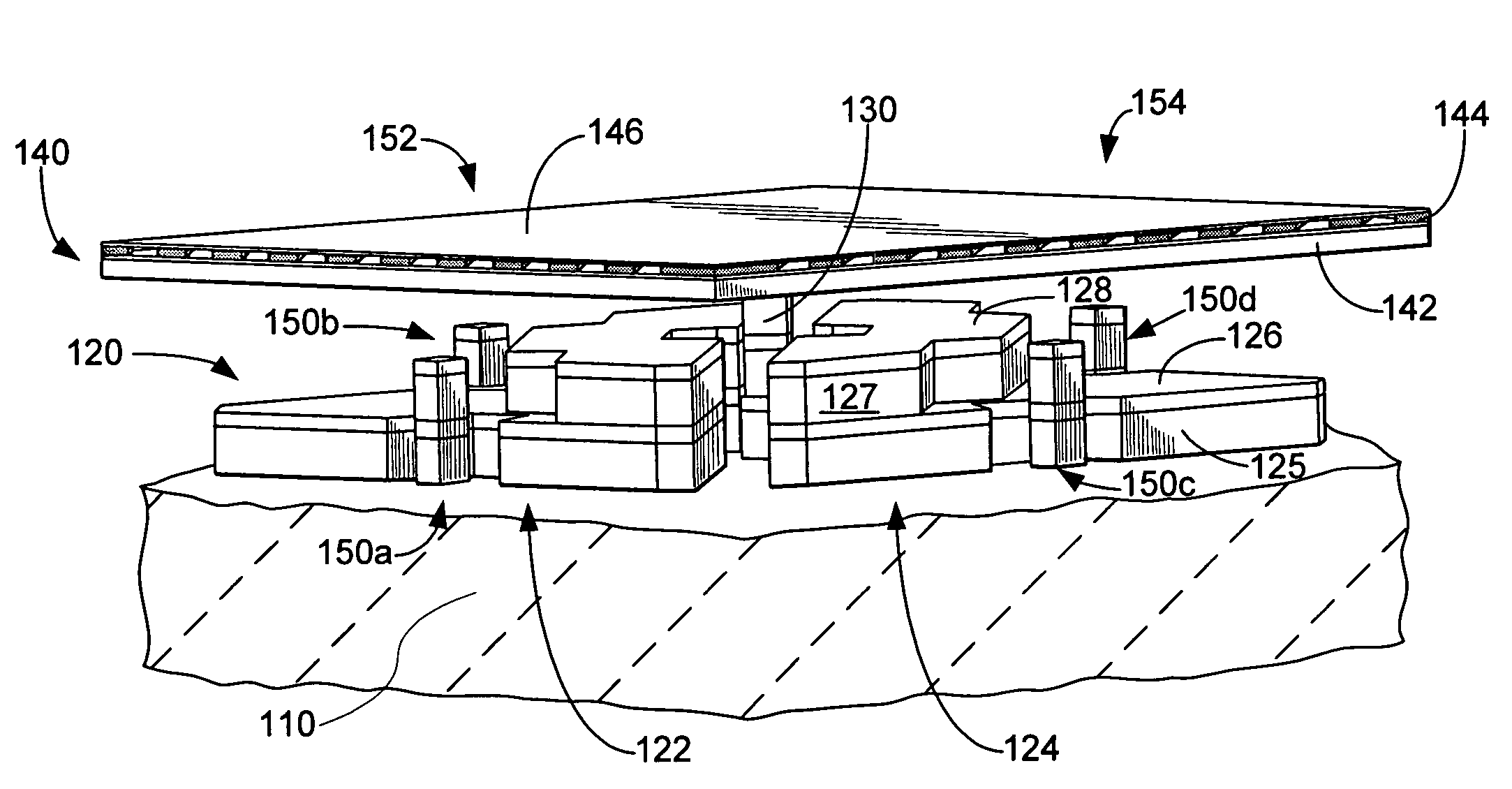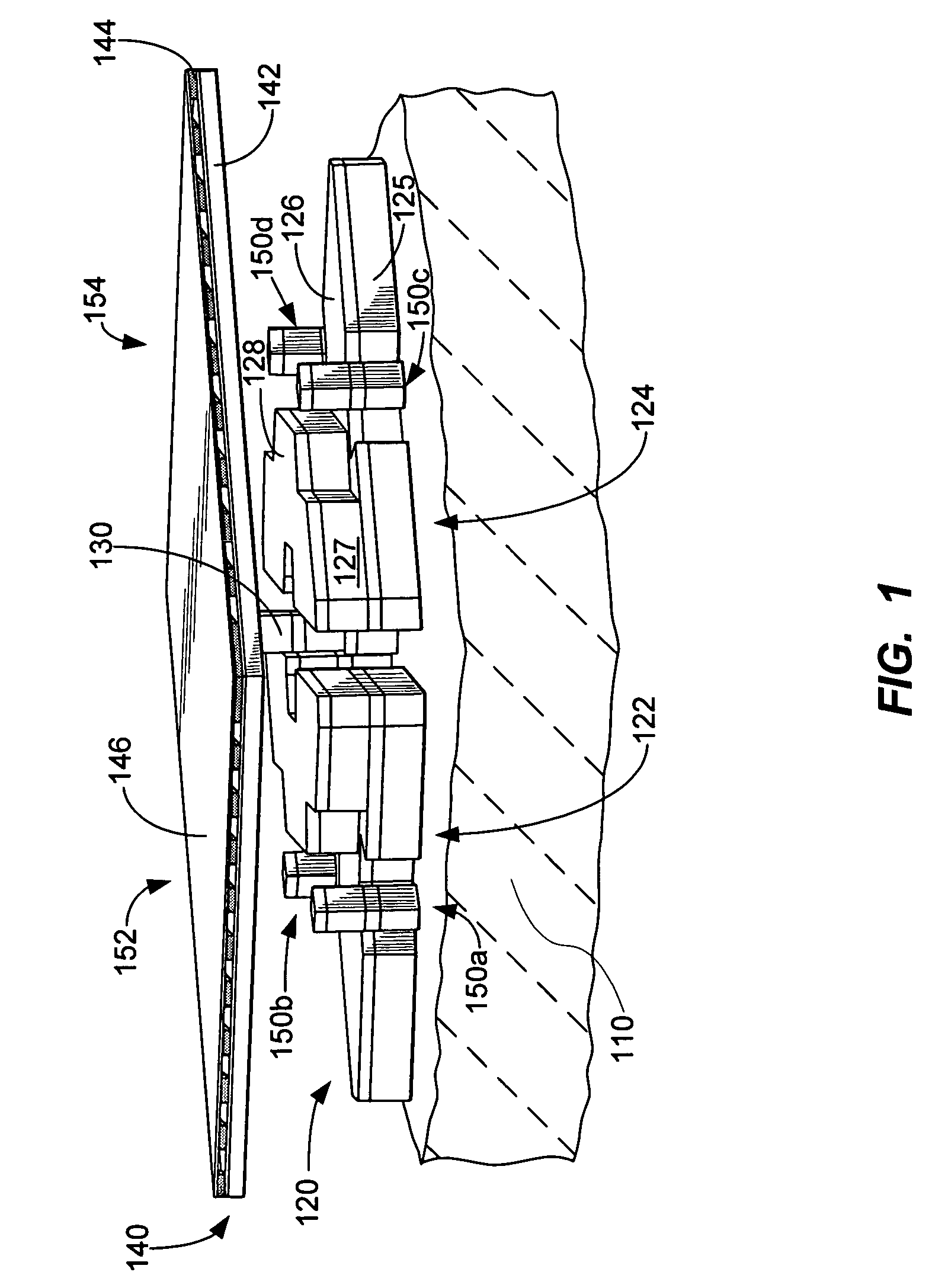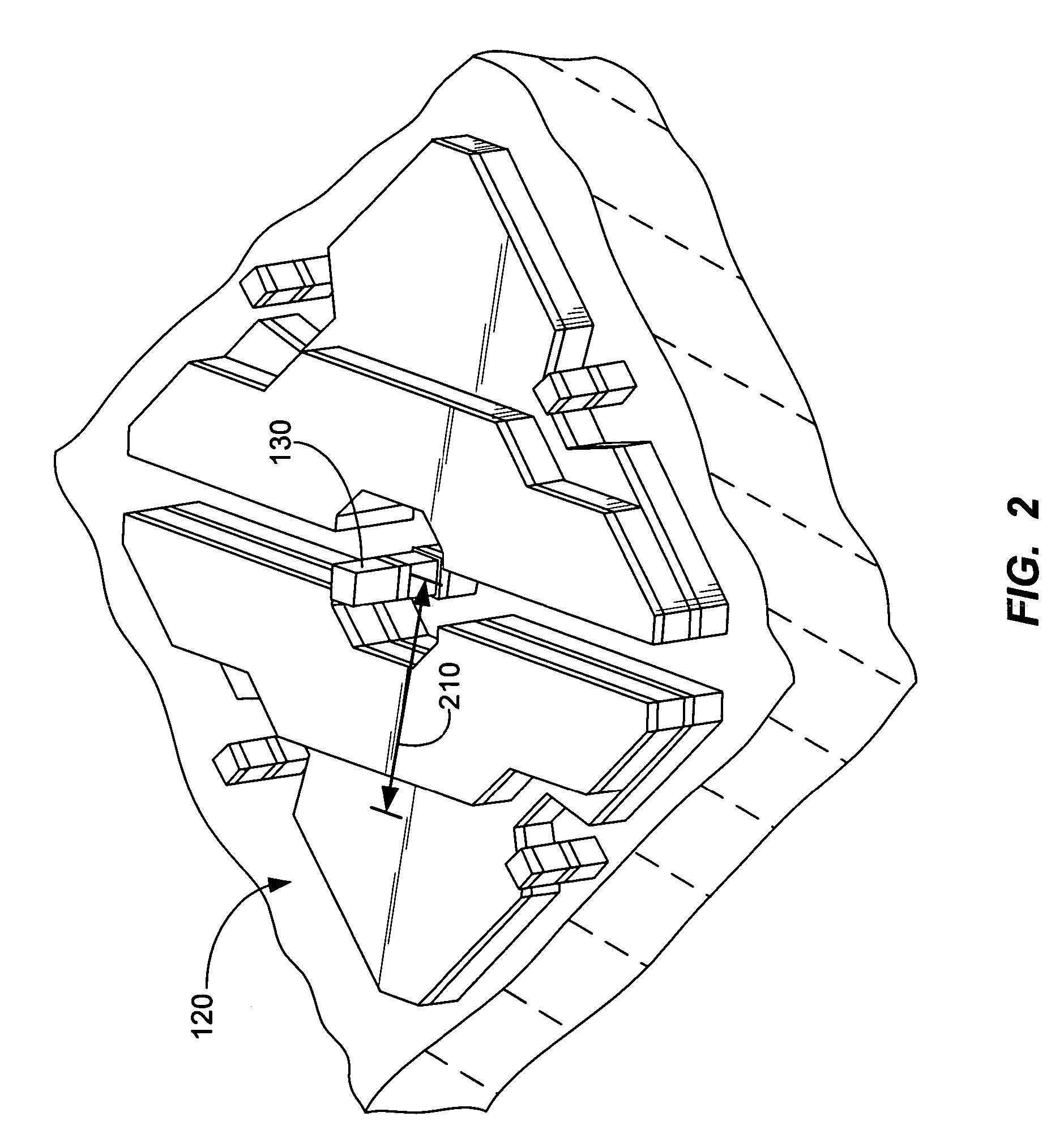Method and structure for high fill factor spatial light modulator with integrated spacer layer
a spatial light modulator and fill factor technology, applied in the field of manufacturing objects, can solve the problems of reducing the reflective efficiency of slms, reducing the reflective efficiency of some slm designs, and large exposed hinge surface area, and achieve the effect of maximizing the contrast ratio of a display devi
- Summary
- Abstract
- Description
- Claims
- Application Information
AI Technical Summary
Benefits of technology
Problems solved by technology
Method used
Image
Examples
Embodiment Construction
[0019]According to the present invention, techniques for manufacturing objects are provided. More particularly, the invention relates to a method and structure for fabricating a spatial light modulator with a high fill factor. Merely by way of example, the invention has been applied to the formation of a spatial light modulator having a torsion spring hinge and mirror plate positioned in the same plane with a uniform reflective layer covering the torsion spring hinge. The method and device can be applied to spatial light modulators as well as other devices, for example, micro-electromechanical sensors, detectors, and displays.
[0020]FIG. 1 is a simplified perspective view of an SLM according to an embodiment of the present invention. As illustrated in FIG. 1, a first substrate 110 is provided and an electrode structure 120 is coupled to the first substrate. In an embodiment, the electrode structure includes a set of multi-level electrodes 122 / 124 coupled to the first surface. Additio...
PUM
 Login to View More
Login to View More Abstract
Description
Claims
Application Information
 Login to View More
Login to View More - R&D
- Intellectual Property
- Life Sciences
- Materials
- Tech Scout
- Unparalleled Data Quality
- Higher Quality Content
- 60% Fewer Hallucinations
Browse by: Latest US Patents, China's latest patents, Technical Efficacy Thesaurus, Application Domain, Technology Topic, Popular Technical Reports.
© 2025 PatSnap. All rights reserved.Legal|Privacy policy|Modern Slavery Act Transparency Statement|Sitemap|About US| Contact US: help@patsnap.com



